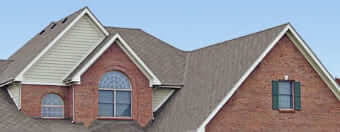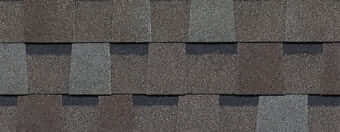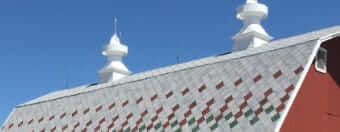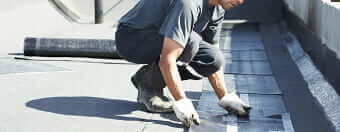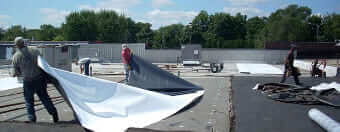from Sherriff Goslin Roofing
Choose your view:
Roofing Safety Tips: Protecting Your Crew & Your Clients
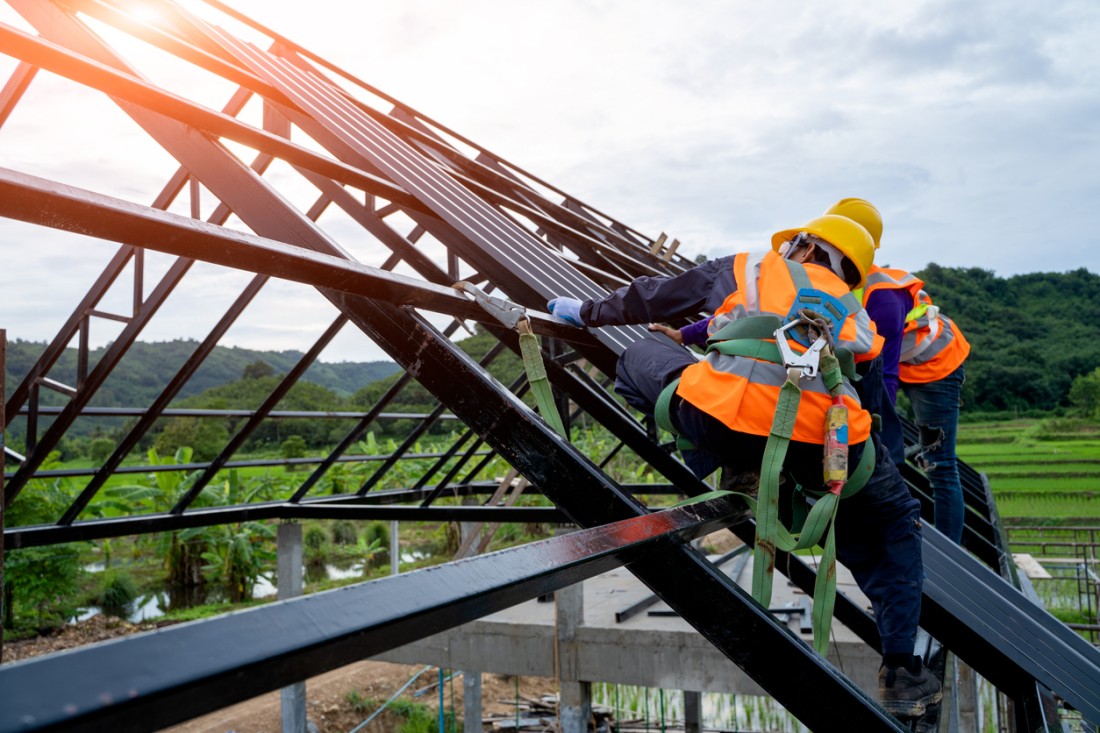
Roofing is a demanding job that requires physical strength, agility, and knowledge of safety protocols. It's crucial for roofers to prioritize safety to prevent accidents, injuries, and even fatalities. Roofing safety not only protects the workers but also ensures quality workmanship and customer satisfaction.
Roofing safety starts with a comprehensive understanding of the potential hazards and risks involved on the job. By being aware of these risks and following proper safety measures, roofers can create a safer work environment for themselves and their team.
Common Roofing Safety Hazards
Roofing is inherently risky, and roofers face numerous hazards while working at heights. It's essential to identify and address these hazards to minimize the risk of accidents. Some common roofing safety hazards include:
- Falls: Falls are the leading cause of injuries and fatalities in the roofing industry. Roofers are constantly exposed to the risk of falling from heights, especially on steep roofs or when working near edges.
- Weather Conditions: Roofers often work in varying weather conditions, including extreme heat, cold, rain, and wind. These weather conditions can increase the risk of accidents and injuries if proper precautions are not taken.
- Ladder Safety: Using ladders is an integral part of roofing work. However, improper ladder use can lead to falls and injuries. It's crucial for roofers to follow ladder safety guidelines, such as ensuring proper ladder placement and maintaining three points of contact while climbing.
- Electrical Hazards: Roofers may come into contact with electrical wiring, power lines, or equipment while working. Failure to identify and manage electrical hazards can result in electric shocks, burns, or even electrocution.
- Material Handling: Roofing materials, such as shingles, can be heavy and cumbersome to handle. Improper lifting techniques and inadequate equipment can lead to strains, sprains, and other musculoskeletal injuries.
Roofing Safety Regulations and Standards
To ensure the safety of workers in the roofing industry, various regulations and standards have been put in place. These guidelines provide a framework for employers and employees to follow in order to maintain a safe working environment. Some of the main roofing safety regulations and standards include:
- Occupational Safety and Health Administration (OSHA): OSHA is a federal agency that sets and enforces standards for workplace safety. Roofing companies must comply with OSHA regulations, which include guidelines for fall protection, ladder safety, electrical safety, and more.
- National Roofing Contractors Association (NRCA): The NRCA is a trade association that provides resources and guidance for roofing professionals. They offer safety programs, training materials, and best practice guidelines to promote roofing safety.
- State and Local Building Codes: Each state and local jurisdiction may have specific building codes that govern roofing safety. These codes outline requirements for roof design, installation, and safety measures.
Complying with these regulations and standards is not only a legal obligation but also a moral responsibility to protect the well-being of workers and ensure safe roofing practices.
Roofing Safety Equipment and Gear
To mitigate the risks associated with roofing work, roofers rely on specialized safety equipment and gear. The use of appropriate safety equipment is crucial for preventing accidents and injuries. Here are some essential roofing safety equipment and gear:
- Personal Fall Arrest Systems (PFAS): PFAS, commonly known as safety harnesses, are designed to arrest falls and prevent roofers from hitting the ground in case of a fall. These systems consist of a full-body harness, lanyard, and anchor point. Proper training and inspection of PFAS are essential for their effective use.
- Roof Brackets and Toe Boards: Roof brackets provide a stable platform for roofers to work on and help prevent falls from the roof edge. Toe boards, installed along the roof perimeter, further enhance safety by acting as a physical barrier.
- Guardrails: Guardrails are barriers installed around the roof's edge to prevent falls. They provide a collective protection system and should be properly designed and securely installed.
- Safety Nets: Safety nets are another fall protection measure that can be used in roofing. They are positioned below the working area to catch and absorb the impact of a fall.
- Hard Hats: Roofers must wear hard hats to protect their heads from falling objects, such as tools or debris. Hard hats should be properly fitted and regularly inspected for any signs of damage.
- Eye and Ear Protection: Roofers should wear safety glasses or goggles to protect their eyes from flying debris and foreign objects. Ear protection, such as earplugs or earmuffs, should be used in noisy work environments to prevent hearing damage.
By utilizing these safety equipment and gear, roofers can significantly reduce the risk of accidents and ensure a safer work environment.
Personal Protective Equipment (PPE) for Roofers
In addition to the specialized safety equipment mentioned above, roofers also need to wear personal protective equipment (PPE) to protect themselves from various hazards. PPE serves as the first line of defense against potential injuries. Here are some essential PPE items for roofers:
- Safety Boots: Roofers should wear safety boots with slip-resistant soles to prevent slips and falls. These boots provide better traction and protect the feet from sharp objects or heavy materials.
- Protective Clothing: Roofers should wear durable and weather-appropriate clothing to protect their skin from cuts, abrasions, and exposure to harsh weather conditions. Long-sleeved shirts, pants, and gloves are recommended to minimize the risk of injuries.
- Respiratory Protection: Depending on the nature of the roofing work, roofers may need to wear respiratory protection, such as dust masks or respirators, to protect themselves from inhaling hazardous substances, like dust or fumes.
- High-Visibility Vest: Roofers working near roadways or in low-visibility conditions should wear high-visibility vests to ensure they are easily seen by others, reducing the risk of accidents.
- Knee Pads: Roofers often spend a significant amount of time kneeling or crouching. Wearing knee pads can help prevent knee injuries and provide cushioning and support.
Proper selection, use, and maintenance of PPE are essential to ensure its effectiveness in protecting roofers from workplace hazards.
Best Practices for Maintaining Roofing Safety
While safety equipment, gear, and training are crucial, following best practices is equally important in maintaining roofing safety. Here are some best practices that roofers should adhere to:
- Conduct Job Hazard Assessments: Before starting any roofing project, perform a thorough job hazard assessment to identify potential hazards and develop appropriate safety measures.
- Implement a Safety Program: Establish a comprehensive safety program that includes policies, procedures, and guidelines for roofing safety. Regularly review and update the program to reflect industry best practices and regulatory changes.
- Promote Open Communication: Encourage open communication among all members of the roofing team to address safety concerns, report hazards, and share best practices. Regular safety meetings and toolbox talks can facilitate such communication.
- Encourage Proper Ergonomics: Roofing work can be physically demanding, so promoting proper ergonomics is essential. Use lifting equipment, maintain good posture, and take regular breaks to prevent strains and injuries.
- Regularly Inspect and Maintain Safety Equipment: Conduct regular inspections of safety equipment and gear to ensure they are in good working condition. Replace or repair any damaged or faulty equipment immediately.
- Stay Updated on Safety Regulations: Stay informed about the latest safety regulations, standards, and best practices in the roofing industry. Regularly review and update safety protocols to align with changing requirements.
By incorporating these best practices into their daily work routines, roofers can create a culture of safety and minimize the risk of accidents and injuries.
Conclusion
Roofing safety is of paramount importance for both roofers and the success of roofing projects. By understanding the common hazards, following safety regulations, utilizing appropriate equipment and gear, and implementing best practices, roofers can significantly reduce the risk of accidents and create a safer work environment.
Proactive measures, such as ongoing training and certifications, promote a culture of safety and ensure that roofers are equipped with the necessary knowledge and skills to navigate potential hazards. Additionally, regular inspection and maintenance of safety equipment and adherence to best practices are essential in maintaining roofing safety.
Remember, prioritizing roofing safety not only protects the well-being of workers but also enhances the reputation and professionalism of the roofing industry as a whole. By investing in safety, roofers can provide expert repair services while ensuring the highest level of safety for themselves and their clients.
Expert Repair With Michigan's Trusted Roofing Experts
Looking for expert roofing repair services in Michigan? Trust the professionals at [Company Name] to handle all your roofing needs. With years of experience, a commitment to safety, and a team of skilled roofers, we guarantee exceptional service and customer satisfaction. Contact us today for a free consultation, and let us secure the safety and longevity of your roof.

